Our Blog - Bretagne Trip - Summer 2021 - Marmande, France
I hadn't heard of the town of Marmande until a couple years ago, when we did a picnic with local products and our picnic basket came with a handful of tomatoes from Marmande. Then again earlier this year, we bought some strawberries and they came from Marmande. So when I was coming up with where to stop during our drive to Brittany this year, Marmande ended up being a perfect place.
From Roman times to the present day, man has always occupied the territory of the town, as evidenced by the Gallo-Roman remains discovered at the entrance to the Tonneins road. The first pages of the history of the city were written in 673, with the important Council of Granon, known as the Council of Bordeaux. But Marmande was really born in 1182, when Richard the Lionhearted granted a charter to the fortified city.
In a small park at the Hotel de Ville is the status "Pomme d'Amour" or apple of love. In this case, it is not an apple but a tomato. This statue evokes the legend of Ferline Giraudeau, daughter of a rich bourgeois from Marmande. This beautiful young girl decided not to choose a husband, to the great despair of her widowed father and her many suitors. One of them was so desperate that he left the city and boarded a ship in Bordeaux and went out to visit some islands. When he returned, he had with him tomato seeds, which made the town somewhat famous.
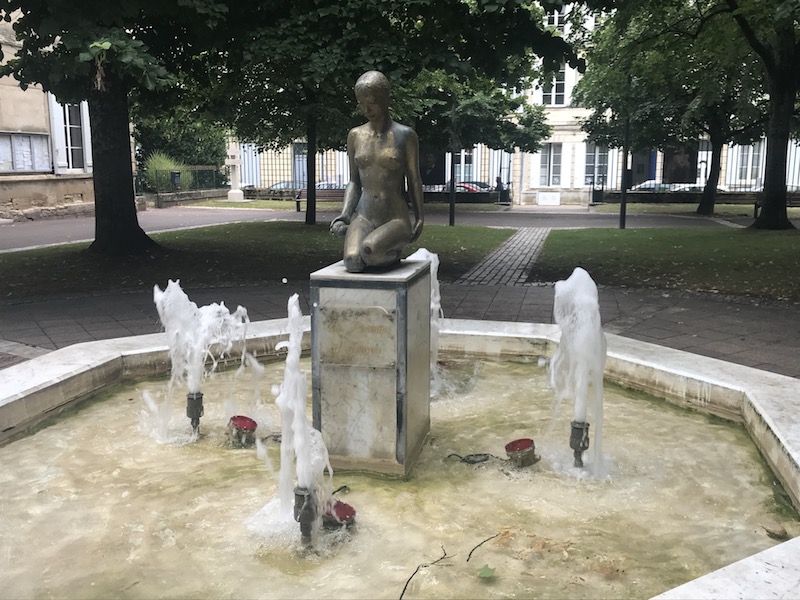
Fontaine des Neuf Fontaines, which has nine water vents coming out of the mouths of lions.
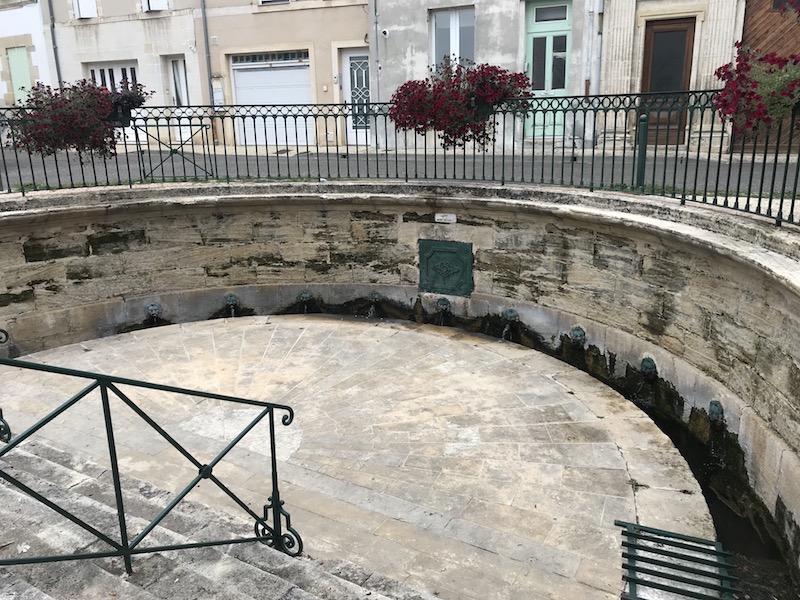

Various medieval houses are located amongst the various small, cobblestoned roads in the historical center. There are several half-timbered houses, and brick houses that still have some of the very old arches that were filled in. It almost looks like the houses had been plastered on the outside to cover up all of the brick and old arches and the plaster had been removed to show the older architecture.

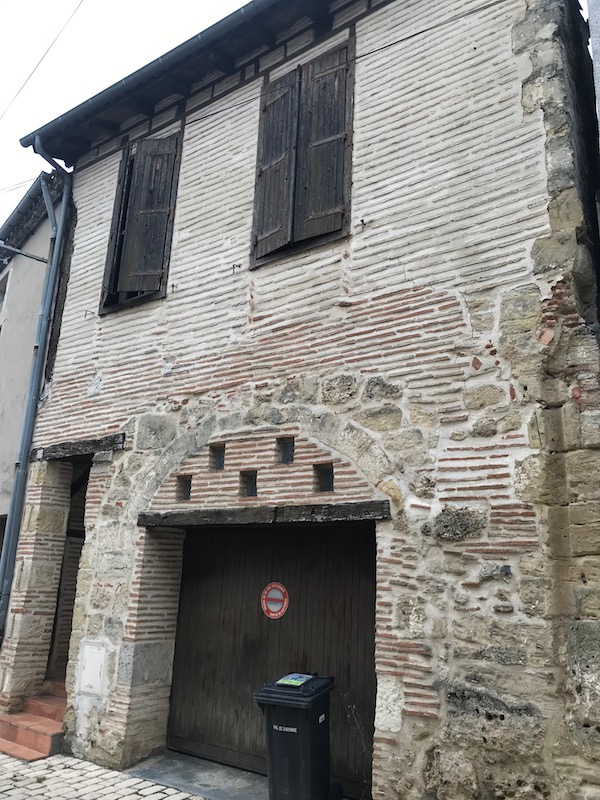
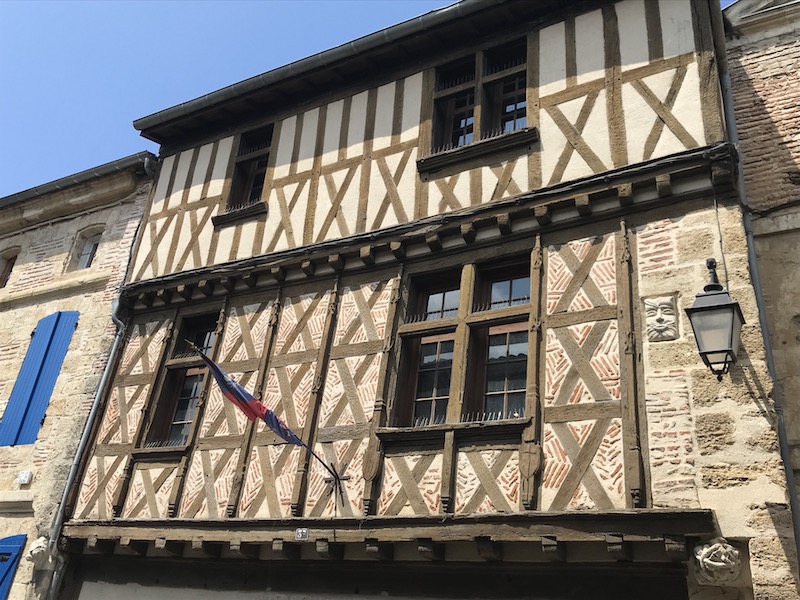
This is the Lavoir d'Onzac, which is an old wash house. In medieval times, the women would all come to a common pool of water to do the laundry. The pool itself isn't that nice, but the covered gallery behind it is quite nice. There is a mural painted on the side of the building above it.

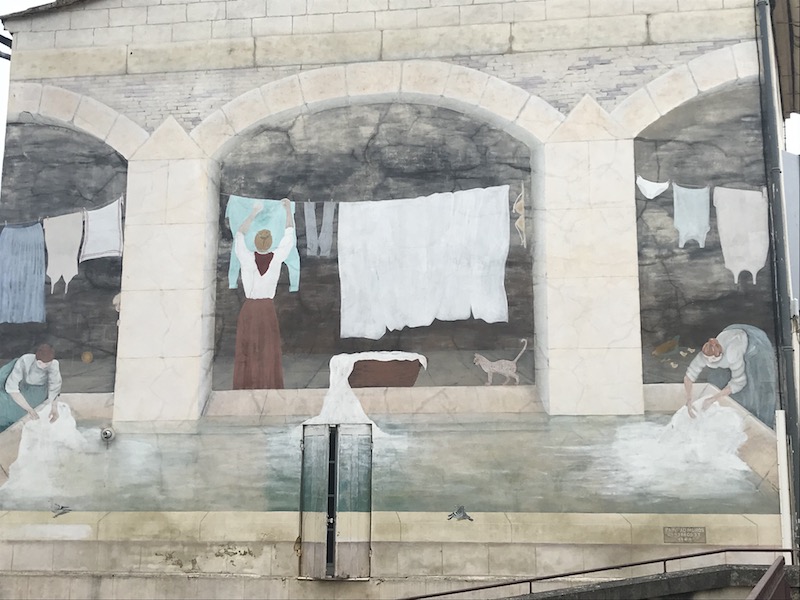
This lovely marble status is entitled "Le Devoir Civique", or Civic Duty.
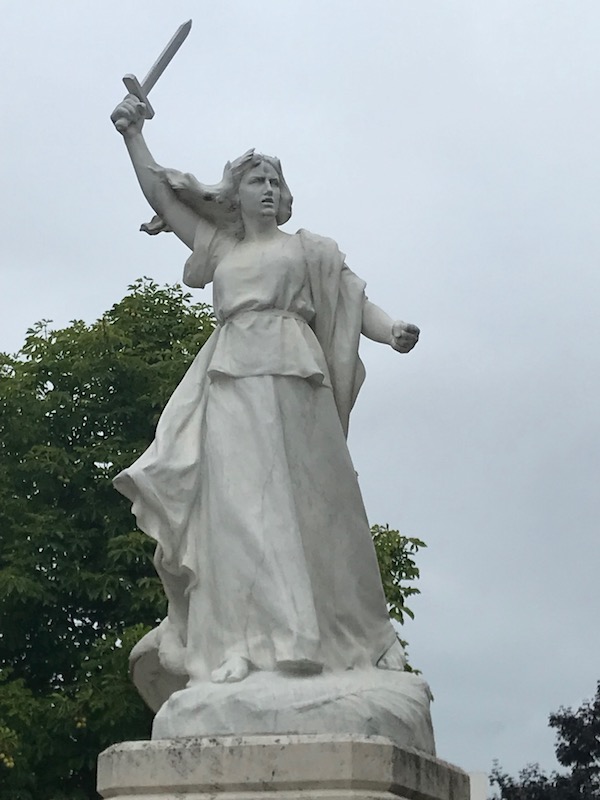
In the middle of Square de Verdun stands this large bell and clock. The bell symbolizes the "twinning" (twin cities) between Marmande and Yuncheng, China. The bell sounds on the hour as kept by the large clock. The clock face has 12 sections representing the 12 signs of the western horoscope.

Along the ramparts are a set of historical mosaics that were added in the 20th century. It shows the six most significant events of the history of the town. They are (in order): The Council of Bishops (673), creation of the fortified village (1050), the charter from Richard the Lionhearted (1182), the Crusades against the Albigeois and a massacre of 5,000 locals (1219), a fire at the Convent of the Cordeliers and the wars of Religion (1569), and the siege of the town by Henri de Navarre/King Henri IV in 1580.


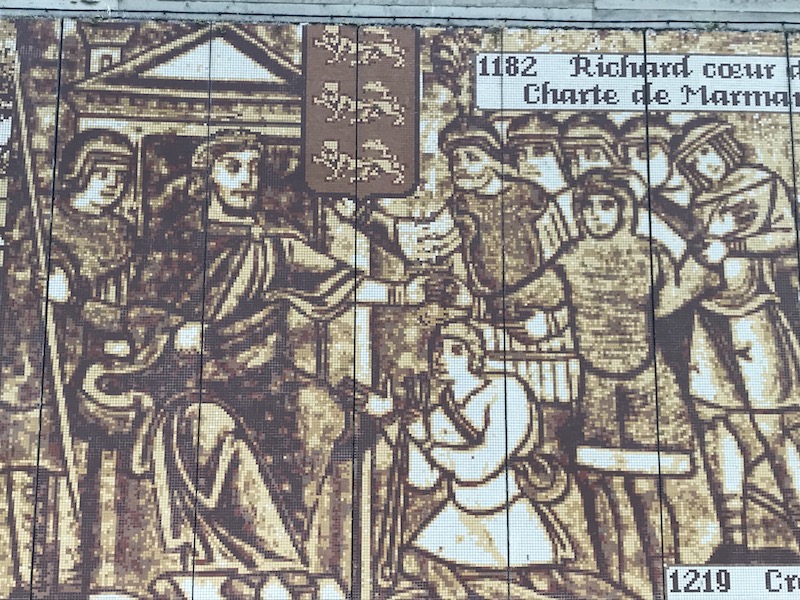



The Anglo-Norman styled Notre-Dame de Marmande was built between the 13th and 16th centuries. Here you can get a nice view of the flying buttresses and what is left of the bell tower (on the right). Originally, the bell tower had a Gothic spire surmounted by a copper rooster. In 1672, the consuls of Marmande deposited the city's powder reserves there. Unfortunately, lightning struck the arrow which exploded, causing extensive damage to the choir of the building and destroying the steeple. It was rebuilt (with an ugly roof now) and has actually been struck by lightning 5 times, the last one in 1921. You can also see what remains of the galleries from the cloister, that was added in 1540.


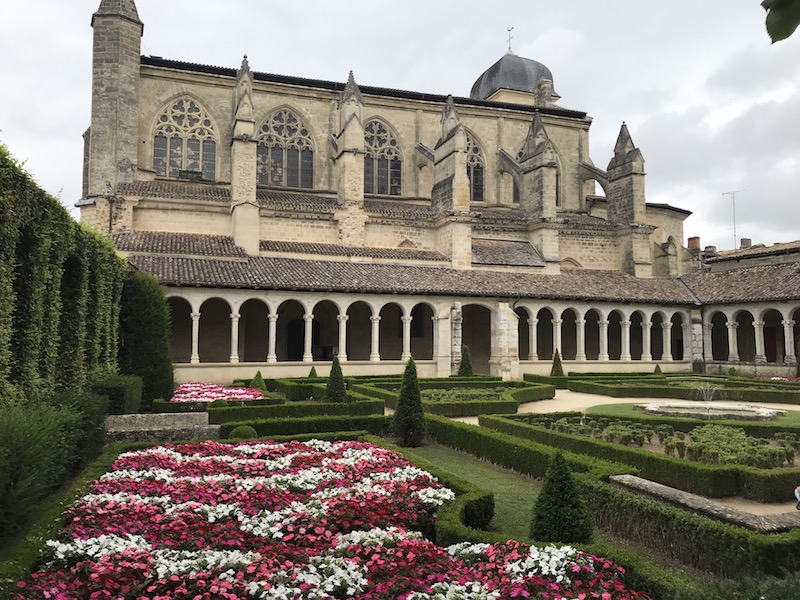
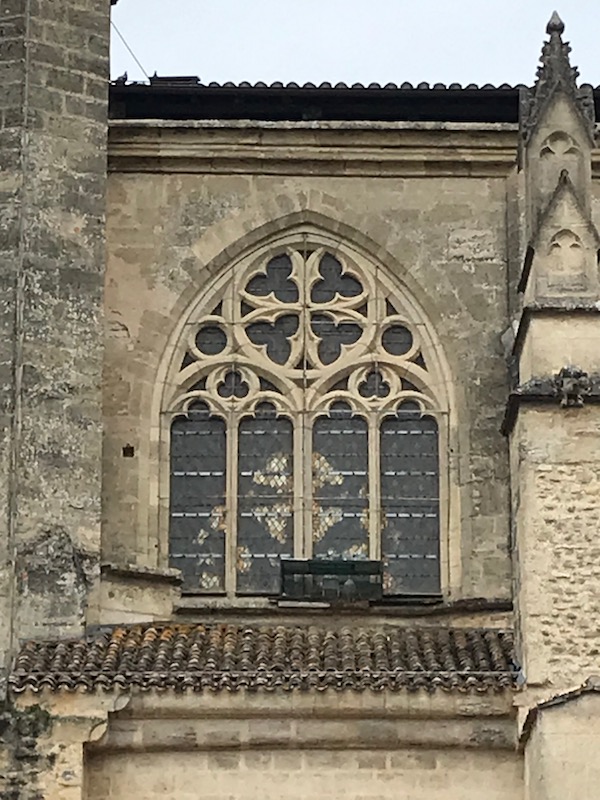
They had this outside in the garden, which you can see matches the window in the picture above.

The cloister was done in a Renaissance style, with pilasters with flower and diamond motifs surmounted by capitals of acanthus leaves.
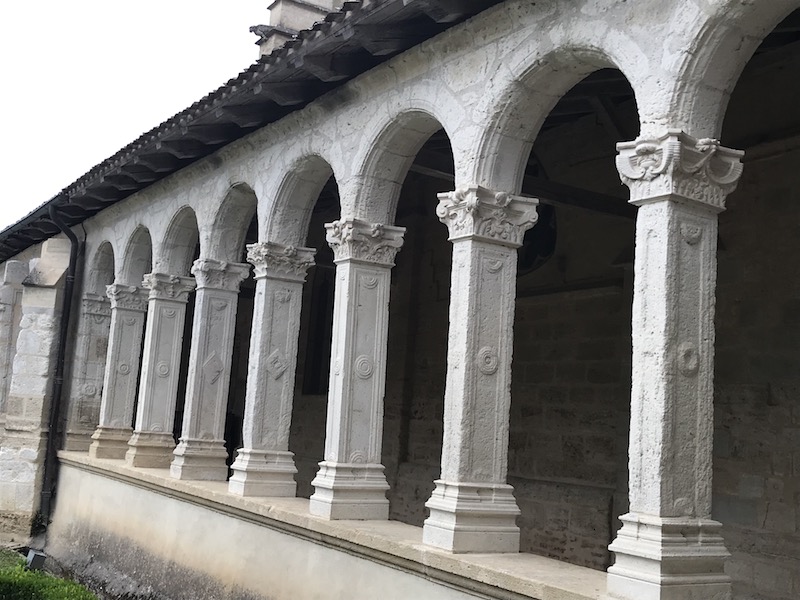



This is the Caillade chapel and was the funeral chapel of one of the important families in Marmande. It was built about 20 years before the cloister was added, and was clearly designed in the Gothic style, with the interior vaulting with the ribs and keystones. The outside hasn't been reconstructed and is a little rough, but you can imagine how great these carvings were when they were done.
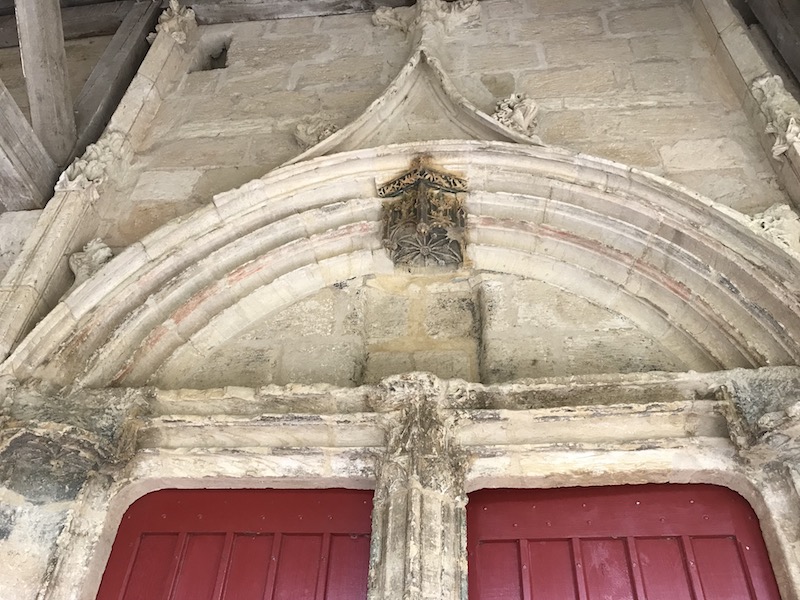
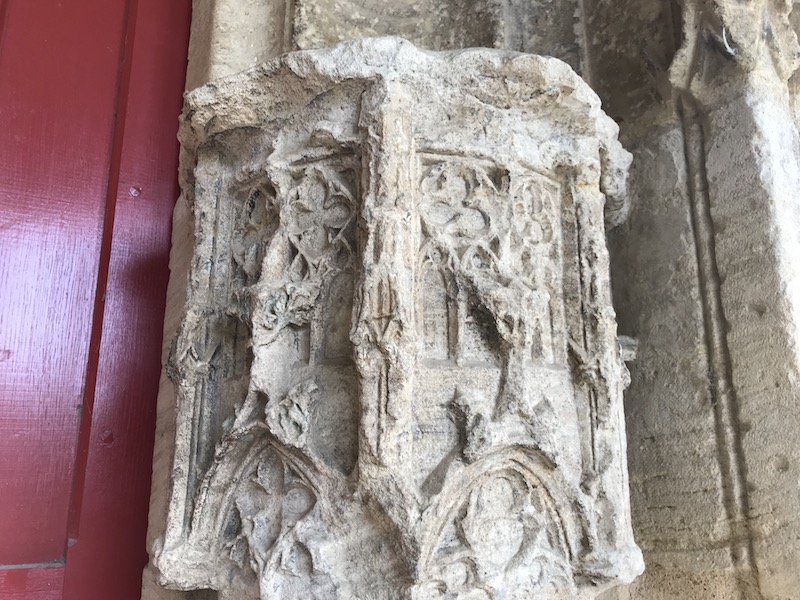
They walls are fairly simple, with the main features going up to the ceiling. Notice the ribs and the keystones, which include several of the Coats of Arms of King Louis XII. The base of the ribs also have carvings.
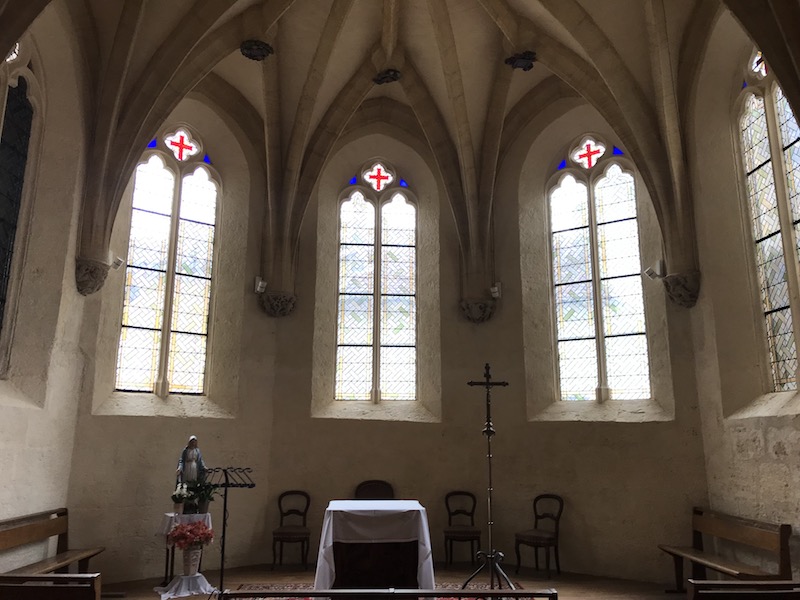
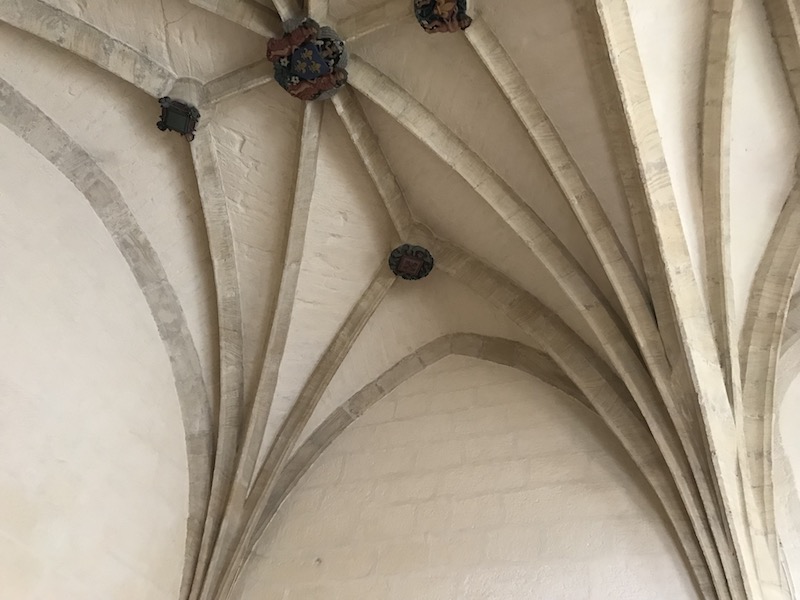

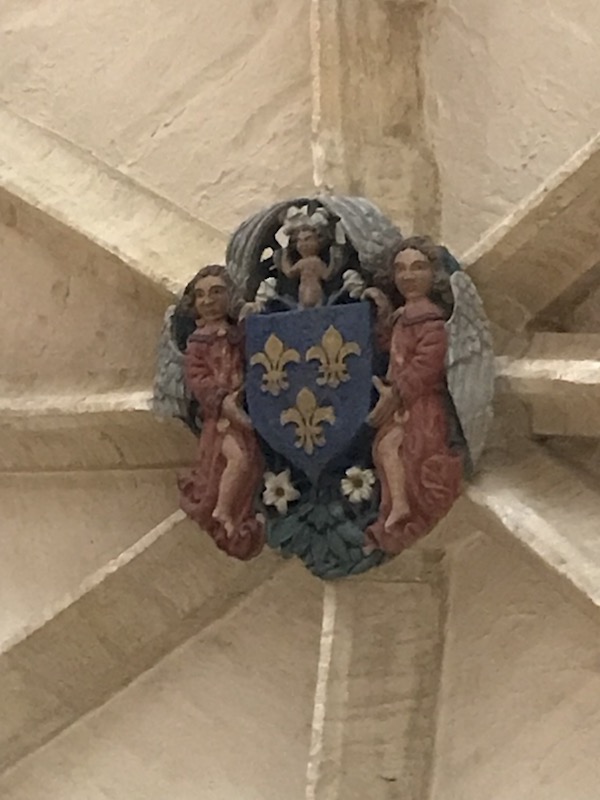

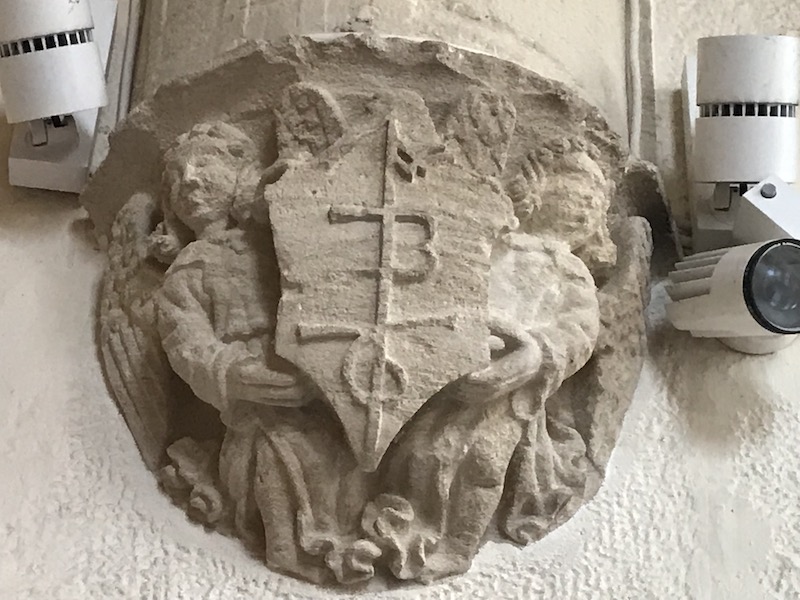
Lucy outside of the main church entrance.


Looking down the nave of the church, you can again pick out the Gothic arches on the sides and the ribbed vaults. But look at how you can see each stone that makes up the ceiling!
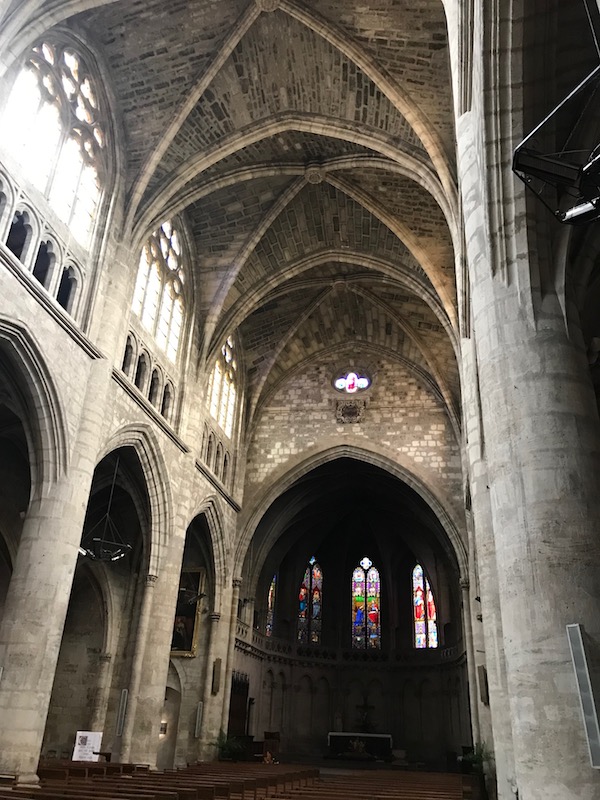

A few pictures of the different stained glass windows throughout the church.
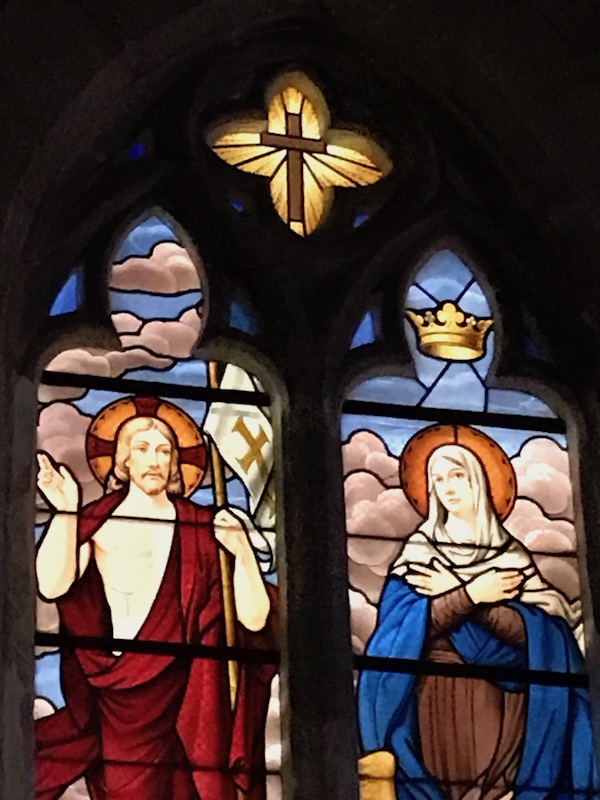

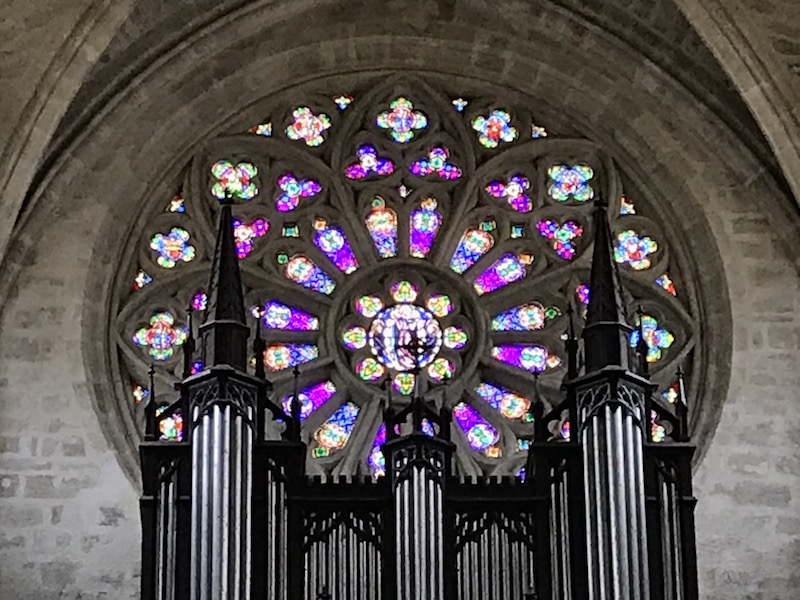
Turning around to look back at the door, over the entrances is a nice statue of Joan of Arc.

There is a really nice carved wooden retable, this one depicting Saint Benoit, which dates back to the 17th century.
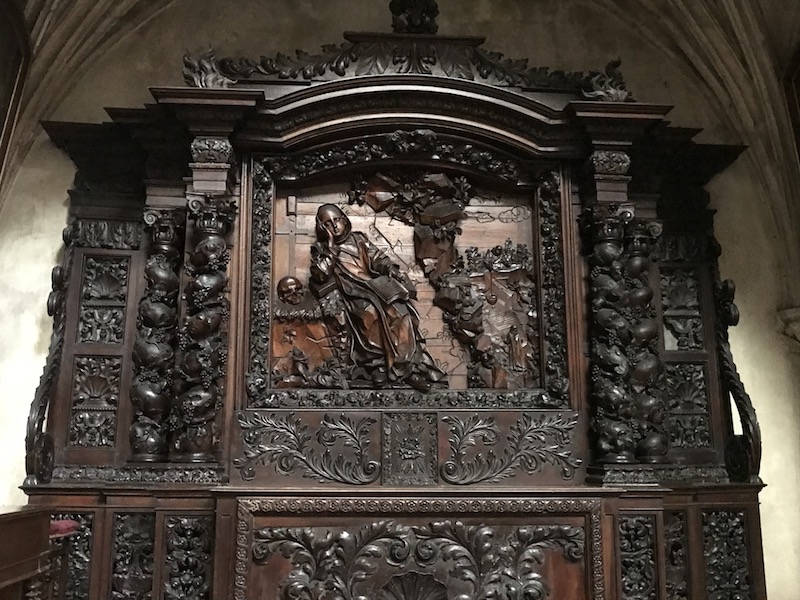
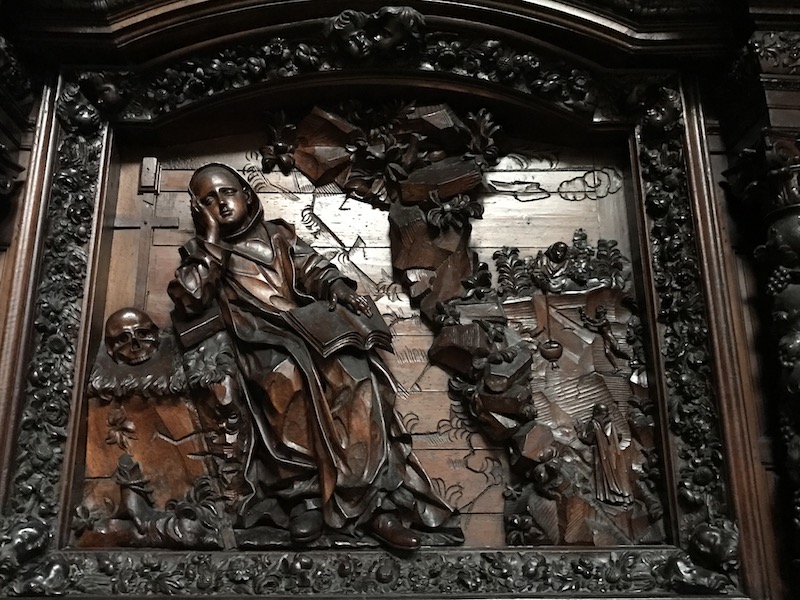

Behind the baptismal font is a 17th century wooden carving of the entombment in Baroque style.

This is the 14th century Tour du Passeur (Tower of the ferryman), which acted as a look-out post for people wanting to cross the small river running alongside the Chemin de Ronde.
